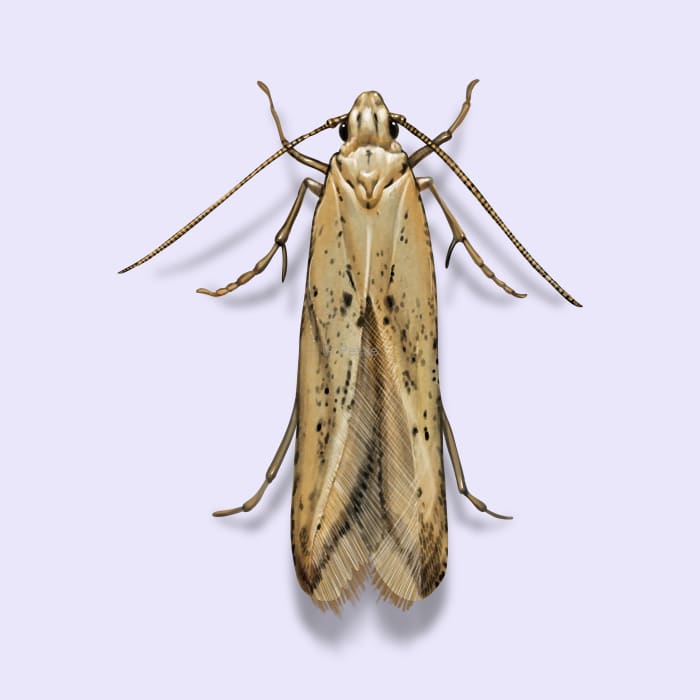How to identify and get rid of Angoumois grain moths

Keep a close eye on your pantry for this pest
No grains are safe from grain moths that want to find a nice place for their larvae to grow. Whether that’s in the farmer’s field or your pantry at home, grains are always at risk of being eaten by pests. The Angoumois grain moth could be lurking in your pantry as you read this!
These tiny, yellowish-brown moths may seem harmless, but they can cause significant damage to your stored grains, turning your food supply into a breeding ground for their larvae.
They typically live in warm, humid environments and are notorious for infesting grains like corn, wheat, and rice. They reproduce quickly, and before you know it, your pantry could be overrun. The adult moths lay eggs on or near grains, and the larvae bore into the kernels, feeding on the interior and leaving behind damaged, hollow grains.
How to identify Angoumois grain moths
Angoumois grain moths are tiny, yellowish-brown moths that are often found in stored grains like corn, wheat, and rice. They’re easy to miss due to their small size, and their larvae stay hidden inside the grain kernels. The adults have pointed forewings with small black spots and their back wings have hairy fringes. The larvae leave behind a fine powder and causing the grains to look damaged or hollow. If you notice small moths fluttering around your pantry or see damaged grains with holes or fine dust, you likely have an Angoumois grain moth infestation.
How big are Angoumois grain moths?
Angoumois grain moths are tiny, about 1/4 inch long, with a wingspan of around 1/2 inch.
Where do Angoumois grain moths live?
These moths are found throughout the United States, particularly in warm, humid regions where grain storage is common.
You’ll most likely find them in your pantry, cupboards, or any place where stored grains like corn, wheat, and rice are kept. They can also infest grains stored in barns or outdoor sheds.
How to get rid of Angoumois grain moths
Finding moths in your pantry can be frustrating, but there are things you can do to stop the spread of these moths and keep them from becoming a bigger problem. Here are a few tips to combat these pests:
Inspecting and discarding infested grains: Thoroughly check all stored grains and discard any that show signs of infestation, such as holes, fine dust, or damaged kernels.
Storing food properly: Keep grains and dry goods in airtight containers to prevent moths from accessing them.
Cleaning your pantry: Clean pantry shelves, including cracks and crevices, to remove any lingering moths, eggs, or larvae. Try vacuuming up any crumbs or powder, and run the vacuum along any corners or wall edges.
Freezing: If you suspect food items might be infested, place them in the freezer for at least a week to kill any larvae or eggs.
Treat angoumois grain moths with Pestie
If you're still having trouble keeping angoumois grain moths away, the best option is to use a pro-grade, effective pest control solution like Pestie.
Pestie is a do-it-yourself pest control solution that's specially designed to keep angoumois grain moths and other pests away from your home.
With Pestie, you can rest easy knowing that your living space is protected and free of creepy crawlies. And the best part? It's designed for people, pets, and the planet, so you can say goodbye to harsh chemicals and hello to peace of mind!
- Save hundreds compared to traditional annual pest plans
- People, pet, and planet-friendly
- Pro-grade customized formulas
Quick facts
- Scientific name
Sitotroga Cerealella
- Other common names
Rice Grain Moths
- Colors
Yellowish-grey
- Life span
1-2 months
- Diet
Grains, such as rice, wheat, corn
How dangerous are Angoumois Grain Moths?
Low danger risk
Angoumois grain moths don’t bite or spread diseases, but they can contaminate and damage stored food products.
Grain that is infested with Angoumois grain moth larvae often gives off a funny smell. It can be a sign that you should eat the grain.








